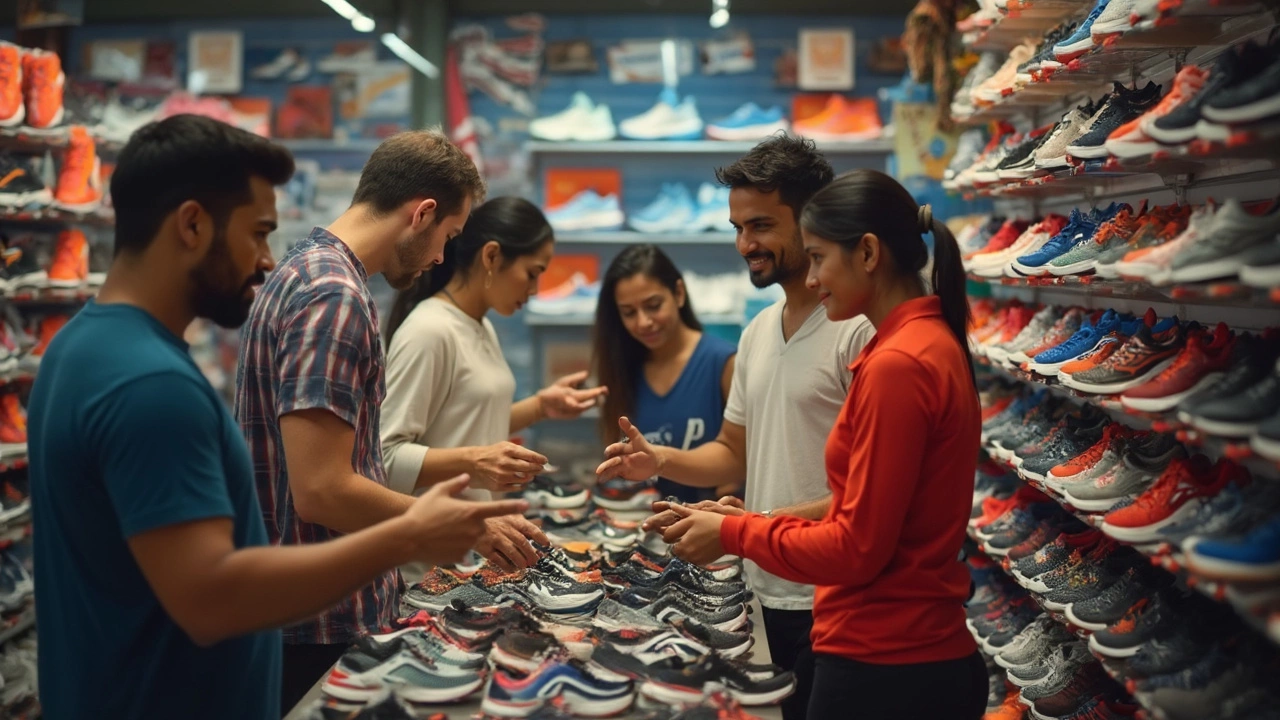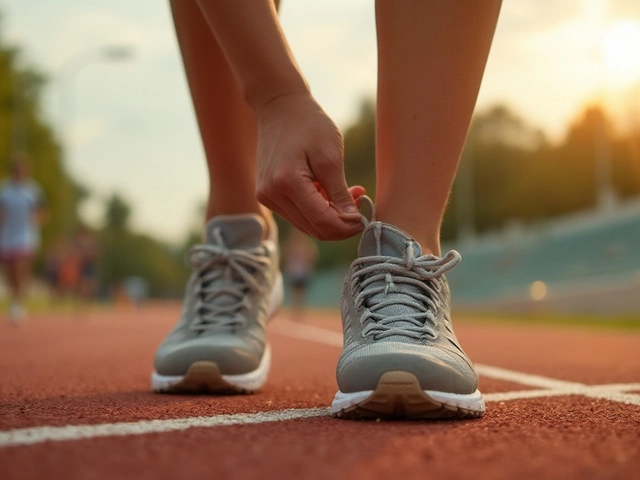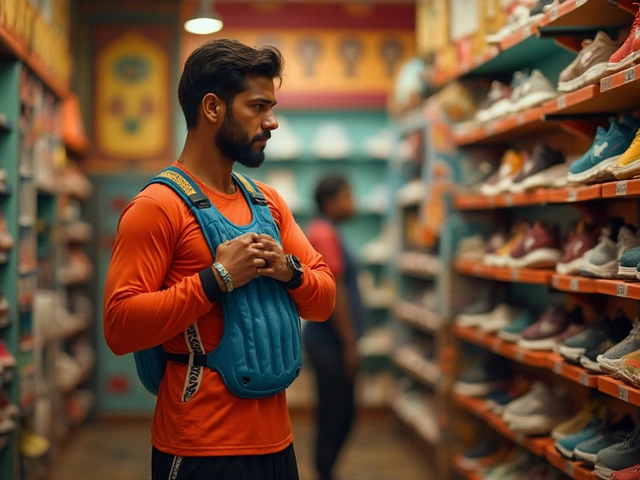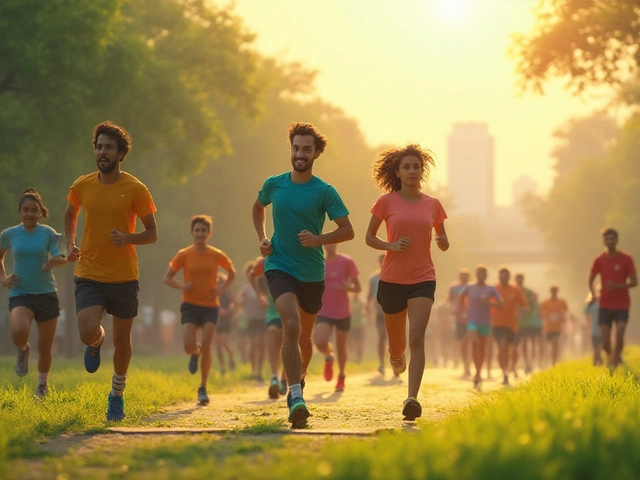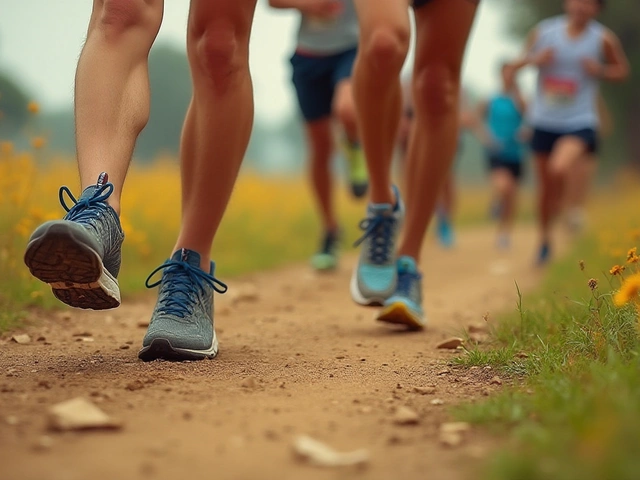Not all running shoe brands are created equal, and picking the right one can totally change your running game. The logo might tempt you, but it’s what’s under the hood (read: inside and underfoot) that really matters. With dozens of brands flashing new tech and big promises, you might feel lost. I’ve watched people—including my wife Meera—ditch a shiny new pair after just a few runs because the shoes felt off. That’s a pain nobody wants.
If you really want to know which brand is good for running shoes, ask yourself what you need: Are you running marathons, jogging three times a week, or just chasing your kid, Tarun, around the park? Your habits shape which brands make sense for you. Some brands are obsessed with cushioning, others focus on super-lightweight builds, and a few try to land somewhere in between. Comfort, fit, price, and durability—that’s where you should zoom in. Nike makes some crazy light trainers, while Brooks is famous for keeping your knees happy over the long haul. Adidas? Their Boost foam feels like running on marshmallows, in a good way. Don’t fall for the hype—what works for your buddy might wreck your knees. The key is knowing what matters, not just what’s trendy.
- What Makes a Running Shoe Brand Good?
- Most Popular Running Shoe Brands Right Now
- How to Pick the Right Brand for Your Feet
- Cool Facts and Brand Innovations
- Pro Tips for Getting The Most From Your Running Shoes
What Makes a Running Shoe Brand Good?
When you ask which brand is good for running shoes, it really comes down to a few things brands consistently get right. A brand stands out if they keep runners comfortable mile after mile, and it shows in every detail—from squish under your heel to how the shoe hugs your toes.
First, let’s talk about fit. The best brands make shoes that work for different foot shapes—narrow, wide, high-arched, flat, you name it. If you slip on a pair from Brooks or New Balance, you’ll notice they offer width options and snug heel counters, which stops your foot from sliding around. Big plus if you’re running more than just the corner store.
Cushioning and support are dealbreakers. Thanks to stuff like Nike’s ZoomX foam or Adidas’s Boost, these brands keep you feeling good whether you’re sprinting or slogging through long runs. Many runners swear by Hoka’s thick midsoles, especially if they run on concrete. The key is a brand that balances bounce with just enough firmness so your feet don’t ache later.
Durability also matters—nobody wants shoes that fall apart after two months. Brands like Asics and Saucony often use tough rubber outsoles that hold up to daily pounding. If you want numbers, average runners expect about 300 to 500 miles out of a quality running shoe. Here’s a quick look at what some top brands commonly offer:
| Brand | Known For | Average Lifespan (miles) |
|---|---|---|
| Nike | Lightweight, race-day shoes | 250-400 |
| Brooks | Comfort, injury protection | 350-500 |
| Adidas | Bouncy foam, street running | 300-500 |
| Asics | Stability, traditional feel | 350-500 |
But it’s not just what’s underfoot. The lacing, breathability, and heel grip can save you from blisters. Good brands improve these year after year, usually with real runner feedback. Ever notice how some brands have more color and style options? It’s not just for fun—people actually run better when they like how their shoes look. Weird, but true.
What really sets the best apart is consistency. If you can walk into a store or shop online and pick any model from a brand, knowing it’ll feel right every time, that’s a huge win. Finding that level of trust often takes trial and error, but stick with it and you’ll know exactly which logo goes with your best runs.
Most Popular Running Shoe Brands Right Now
It's hard to talk about running shoes without bringing up the big names. These brands don’t just spend a fortune on ads; they have real street cred with runners all over the world. Some brands lead the pack with cool tech, while others win with consistent comfort. Here’s a breakdown of the main players and what actually makes them stand out.
- Nike – Everyone knows Nike. What keeps them at the front is constant innovation. Their ZoomX foam is super lightweight and bouncy, and you see a ton of marathon winners in Nikes. The Nike Pegasus is a safe bet for daily training, while the Vaporfly series is all about speed. But Nike shoes can run narrow, so wide-footed folks might need to look elsewhere.
- Adidas – Adidas’s Boost foam sort of changed the game. UltraBoost shoes are famous for comfort and energy return—you can wear these to the store or a half marathon. If you want grippy trail shoes, their Terrex line gets high marks too.
- Brooks – Brooks doesn’t chase trends; they focus on keeping you injury-free. Their Ghost and Glycerin lines are favorites among folks who want a cushioned, stable ride. For everyday runners, Brooks reliability is hard to match—even neutral runners and overpronators find something that works.
- ASICS – If you’ve ever set foot in a running store, you’ve seen ASICS. Their GEL cushioning absorbs shock, saving your joints mile after mile. The Kayano is a classic for those who want a supportive shoe.
- Hoka – Don’t let the thick soles throw you off. Hoka shoes look chunky but feel surprisingly light, with plush cushion that’s perfect for tired legs or long distances. Trail runners especially love their grip and comfort.
If you’re curious about how these brands stack up, here’s a quick snapshot of what runners say online. The numbers below are based on recent surveys and store reviews:
| Brand | Known For | Popular Model | Average Rating (/5) |
|---|---|---|---|
| Nike | Lightweight, race-day speed | Pegasus | 4.6 |
| Adidas | Comfort, versatile style | UltraBoost | 4.5 |
| Brooks | Stability, injury prevention | Ghost | 4.7 |
| ASICS | Cushioning, support | GEL-Kayano | 4.4 |
| Hoka | Max cushion, recovery | Clifton | 4.6 |
Choosing from these brands really depends on your priorities. If you’re hunting for speed, Nike and Adidas dominate race day. If you’re focused on injury prevention or longer runs, Brooks and Hoka have an edge. Try them on, read reviews, or even borrow a friend’s pair for a short spin if you can. What feels just right for you might be totally different for someone else.
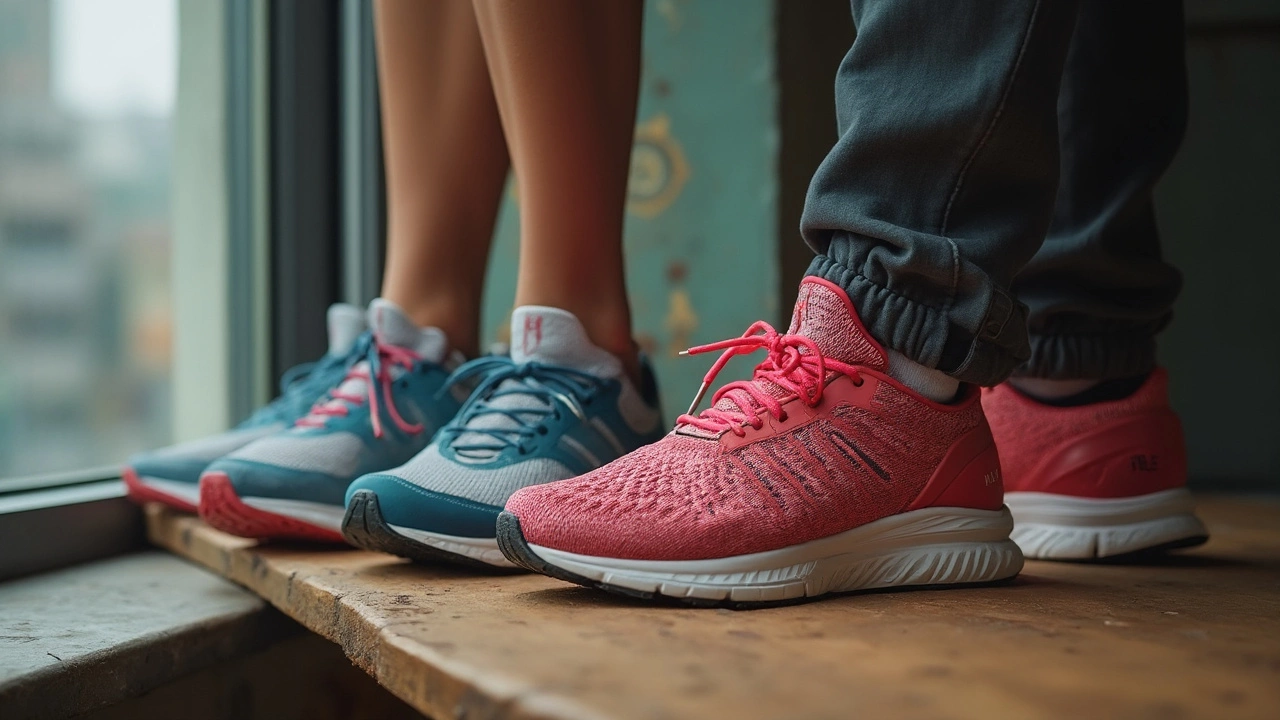
How to Pick the Right Brand for Your Feet
Blink and you’ll miss it: every other day, shoe companies drop new models with flashier designs. It’s tempting, but don’t just pick your next running shoes on looks or brand alone. The right shoes come down to how they fit your unique feet, your running style, and even the surfaces you run on.
Here’s what really matters when picking a brand:
- Foot shape matters. Some brands are wide-friendly (think Brooks, New Balance) while others run narrow (Nike, Asics). If your toes always feel squished, try brands that offer wide sizes.
- Your running surface counts. Road runners love Nike or Adidas for their responsive foam. Trail runners dig Salomon and Hoka for grippy soles and extra protection.
- Cushioning level. If you’re doing long runs or battling sore knees, Brooks and Hoka are favorites for plush cushioning. Racing? Nike’s lightweight shoes or Adidas’ Boost foam give that fast, springy feel.
- Arch support. Flat-footed runners find Saucony and Asics more supportive, but high arches may vibe with Brooks Glycerin or Hoka Clifton.
Here’s a quick breakdown of popular brands and their key features:
| Brand | Main Strength | Known For |
|---|---|---|
| Nike | Lightweight & Responsive | Speed & Innovation |
| Adidas | Bouncy Cushion (Boost) | Daily Comfort |
| Brooks | Stability & Support | Knee-Friendly, Durable |
| Hoka | Max Cushion | Long Runs, Recovery |
| Asics | Reliable Support | Distance Runs |
| New Balance | Wide Fit Options | Comfortable Daily Trainers |
| Salomon | Trail Grip | Off-Road Adventures |
Don’t forget, the right fit can even change within a brand—Nike Pegasus feels different than Nike Zoom Fly, for example. If you’ve got a nearby running store, get your stride checked or try shoes on a treadmill. Those quick test jogs often tell you more than any review online.
At home, the trick is to try shoes late in the day, when your feet are a bit swollen from walking around. Make sure there’s at least a thumb’s width from your big toe to the front of the shoe. And if you’re ordering online, check those return policies—most of the big brands and sites will let you do a trial run inside the house and send them back if they’re not a fit.
Cool Facts and Brand Innovations
Running shoe brands aren’t just sitting around rolling out the same old stuff each year. They push technology like crazy, and sometimes their ideas actually change how we run. Check these out—some of this stuff impacts running shoes in ways most people don’t even realize.
- Nike's big moment was the release of their Vaporfly line, which is packed with a carbon plate inside the sole. This plate boosts your forward push, helping marathon runners chop minutes off their race times. In 2019, athletes wearing Vaporflys bagged nearly every podium in the World Marathon Majors.
- Adidas turned people’s heads with Boost foam. If you ever tried on their UltraBoosts, you know what the hype is about. The foam gives back loads of energy with every step, making even tired legs feel springy. Adidas even recycled ocean plastic in their Parley collection to make sustainable shoes, which is wild for the planet.
- Brooks has something called DNA Loft, which adapts to the way you land on your feet. So if you’re a heel-striker or run on your toes, the shoe cushions you the right way each time.
- Asics went full science mode with their GEL technology, pumping silicone-based gel into the heel for shock absorption. If you’re always dealing with sore knees or shins, this one’s a life-saver.
- New Balance has figured out how to do 3D printing for midsoles. That means they can create shoes that fit different feet more precisely. It’s a geeky move, but really helps anyone who struggles to get a comfortable fit.
And here’s a cool stat: according to a 2024 survey by Runner’s World, 71% of runners say shoe tech has made a noticeable difference in both comfort and performance.
| Brand | Main Innovation | First Launched |
|---|---|---|
| Nike | Carbon plate (Vaporfly) | 2017 |
| Adidas | Boost foam | 2013 |
| Brooks | DNA Loft cushioning | 2018 |
| Asics | GEL cushioning | 1986 |
| New Balance | 3D-printed midsoles | 2021 |
The real win here? You get more choices with brands spiraling into innovation wars. But don’t get caught up in flashy features if all you need is solid support or a shoe that fits your foot shape. Sometimes the most hyped gadget is something you’ll barely notice after a few runs, but a bit of extra cushioning (or a better fit) might keep you running years longer.
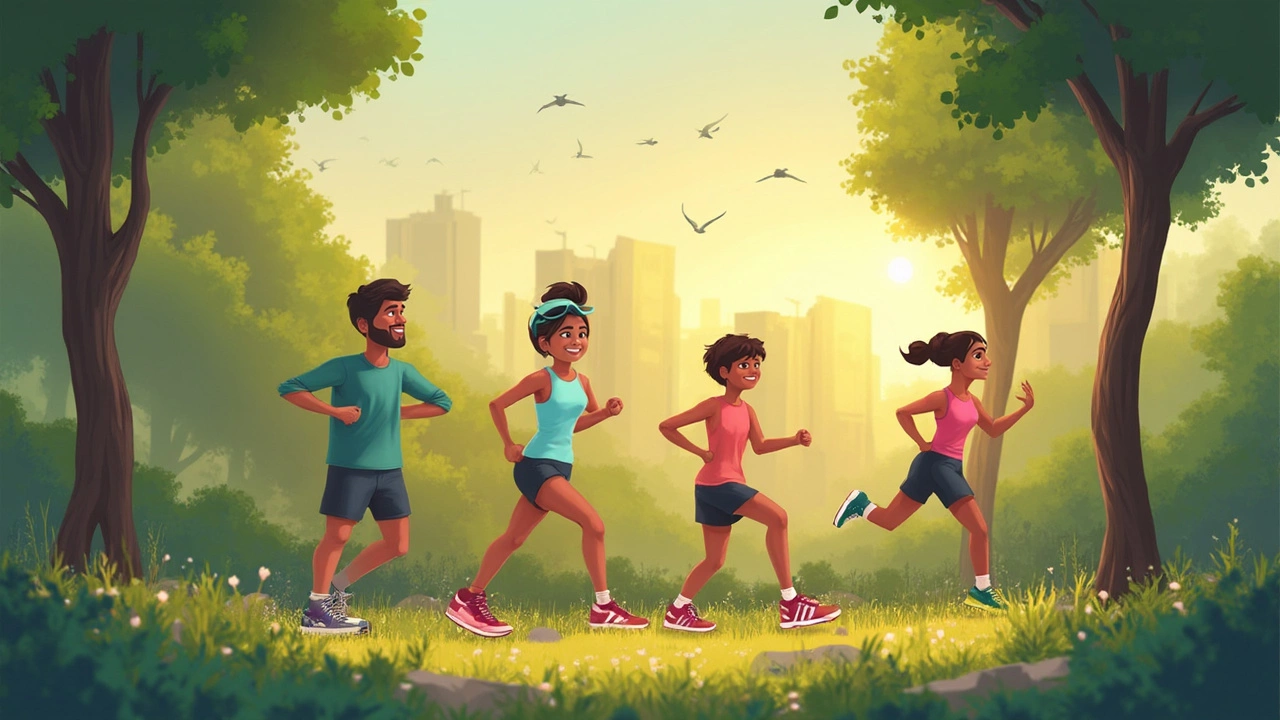
Pro Tips for Getting The Most From Your Running Shoes
Want to squeeze every last mile out of your running shoes? There are a few simple habits that'll make a huge difference. First up, don’t run in your shoes straight out of the box for a race. Take them on a few easy runs to let them break in—your feet need time to adjust, and so does the shoe. Rushing it is a recipe for blisters.
Rotating between two pairs is not some pro-runner nonsense. It really does help. Switching can extend the life of both pairs, especially if you alternate brands like Nike and Adidas. It gives the cushioning time to bounce back, meaning better comfort and fewer knee complaints. I learned this the hard way after one pair got squashed flat—my knees have never forgiven me for that week.
Pay attention to mileage. Most running shoe brands recommend swapping out shoes after 400 to 500 miles, but keep an eye (and nose) on the signs: if the grip is thin, the midsole feels dead, or the upper looks battered, it’s time. Here’s a handy reference:
| Shoe Brand | Avg. Recommended Lifespan | Notable Features |
|---|---|---|
| Nike | 300-500 miles | Lightweight, flexible soles |
| Brooks | 400-500 miles | Soft cushioning, stability |
| Adidas | 300-500 miles | Boost foam, bounce |
Don’t throw your shoes in the washing machine. Wipe them with a damp cloth and use mild soap. Machines can mess up the glue and bust the mesh, even on top running shoe brands. Trust me—it’s not worth saving those few extra minutes.
Finally, get your shoes fitted at a real store now and then. Your foot shape can change (especially after having kids, as Meera found out). Custom insoles aren’t just for people with weird feet either. If you’re logging serious miles, they can keep joints happier for longer.
If you take these steps, your investment in quality running shoes will pay off, mile after mile.
